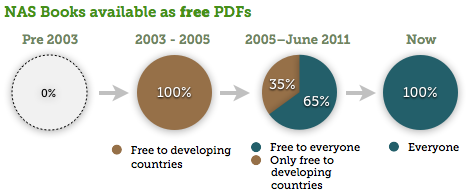Community Embraces New Word Game at Mid-Year Play Day This past Sunday, families at Takoma Park’s Seventh Annual Mid-Year Play Day had the opportunity to experience OtherWordly for the first time. Our educational language game drew curious children and parents to our table throughout the afternoon. Words in Space Several children gathered around our iPads […]
Read moreCategory: Strategy

“The debate about which is better, face-to-face learning or online learning is fast becoming obsolete,” says Jennifer Berghage, an instructional designer at Pennsylvania State University. The common goal is that “an online course should be, above all, engaging, so that the learner enjoys the learning and is able to not only assimilate it but retain it and apply it.”
Online courses are revolutionizing formal education, and have opened a new genre of outreach on cultural and scientific topics. These courses deliver a series of lessons to a web browser or mobile device, to be conveniently accessed anytime, anyplace. (more…)
 What was once prohibitively complex and expensive can now be done inexpensively with online testing services. Testing will uncover problems that are confusing for your audience. Here’s a list of vendors to start your research process, and some suggestions.
What was once prohibitively complex and expensive can now be done inexpensively with online testing services. Testing will uncover problems that are confusing for your audience. Here’s a list of vendors to start your research process, and some suggestions.
Three suggestions
For a real-world example on a recent project, designer Ben Snyder said on his blog, “the purpose of the user test is to get feedback about the new design to understand if there are any parts of the website that are confusing to users, and to test the site for hidden bugs that might prevent a user from getting the information they need” or prevent them from completing actions on the site. (more…)
 Make sure your investments on web sites, apps or new real-life programs don’t fail by conducting usability and user experience testing.
Make sure your investments on web sites, apps or new real-life programs don’t fail by conducting usability and user experience testing.
“Usability testing differs from focus groups in that it involves the observation of participants as they actually use the product,” said Ian David Moss, a development consultant who works in the Arts. “They key feature of usability testing that makes it different from most other kinds of feedback-gathering methods is that it is based on direct observation rather than self-reporting….So, rather than have people sit around a room and talk about (for example) how they might react to a new feature or what challenges they face in their daily work, you have people sitting in front of a computer and trying to navigate a website’s capabilities while staff members look over their shoulders and take notes.” (more…)
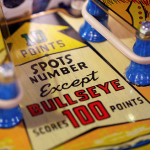
Gameplay has a lot to teach us about motivating participation through joy. ‘Gamification’ is a new term, coined in 2008, for adapting game mechanics into non-game setting — such as building online communities, education and outreach, marketing, or building educational apps. Here are some ideas for how to do it.
 Achievements
Achievements
Badges, trophies and points represent having accomplished something. Since antiquity, people have been honored with medals, crowns and other decorations. Wreaths made of bay laurel were awarded to Greek athletes, and worn by Roman poets (e.g., Ovid, at left). (more…)
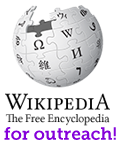 Wikipedia, the free, online encyclopedia that “anyone can edit,” is a useful way to deliver scientific and cultural knowledge to the public. Wikipedia is the 5th most visited web site, with 400–450 million unique visitors per month.
Wikipedia, the free, online encyclopedia that “anyone can edit,” is a useful way to deliver scientific and cultural knowledge to the public. Wikipedia is the 5th most visited web site, with 400–450 million unique visitors per month.
It’s not “merely a larger audience, but a different audience,” says Sara Snyder, webmaster for the Smithsonian Institution’s Archives of American Art, who has recently started to use Wikipedia more. She says, “Our main website is geared towards an academic-minded or university-level student, researcher, curator, or professional art historian. Yet we have information and collections that may inform or appeal to a broader set of folks, such as younger students and art enthusiasts. Wikipedia is a platform for trying to start serving those researchers too, without overhauling the current way we do business or our existing website.” (more…)
There’s a great new video on YouTube, “I’m a climate scientist.” It uses gangsta-rap flavor to bring home the point that a lot of people talking about climate change are not actual climate scientists. Here’s the video, which contains some expletives:
If you are at work, or don’t like the word “F##k,” try out this clean version. Here’s the story… (more…)
![]() All publications from the National Academies Press (NAP) are now available for free as PDFs. NAP is the publishing arm of the National Academies, and publishes 200+ books a year on topics in science, engineering, and health.
All publications from the National Academies Press (NAP) are now available for free as PDFs. NAP is the publishing arm of the National Academies, and publishes 200+ books a year on topics in science, engineering, and health.
Making the PDFs free is the culmination of a decade of research and sales modeling on how to finance a nimble publishing house with paid print books, with enough spare revenue to allow free release of electronic books. Here’s the evolution:


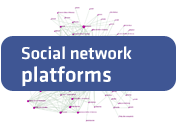 So you want to create a niche social network? And you’ve read the
So you want to create a niche social network? And you’ve read the 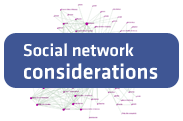 Social networking gives professionals and enthusiastic members of the public a great way to connect and share information about scientific or cultural topics.
Social networking gives professionals and enthusiastic members of the public a great way to connect and share information about scientific or cultural topics.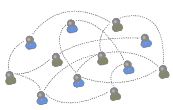 Thinking about launching a new niche social network for a science or cultural community of professionals? Think again. It costs a lot to do well, and there’s a major risk of failure. People don’t have much time to spend logging into yet another social network, and it’s hard to reach a critical mass so that the site is interesting for people to use.
Thinking about launching a new niche social network for a science or cultural community of professionals? Think again. It costs a lot to do well, and there’s a major risk of failure. People don’t have much time to spend logging into yet another social network, and it’s hard to reach a critical mass so that the site is interesting for people to use. Ravelry
Ravelry